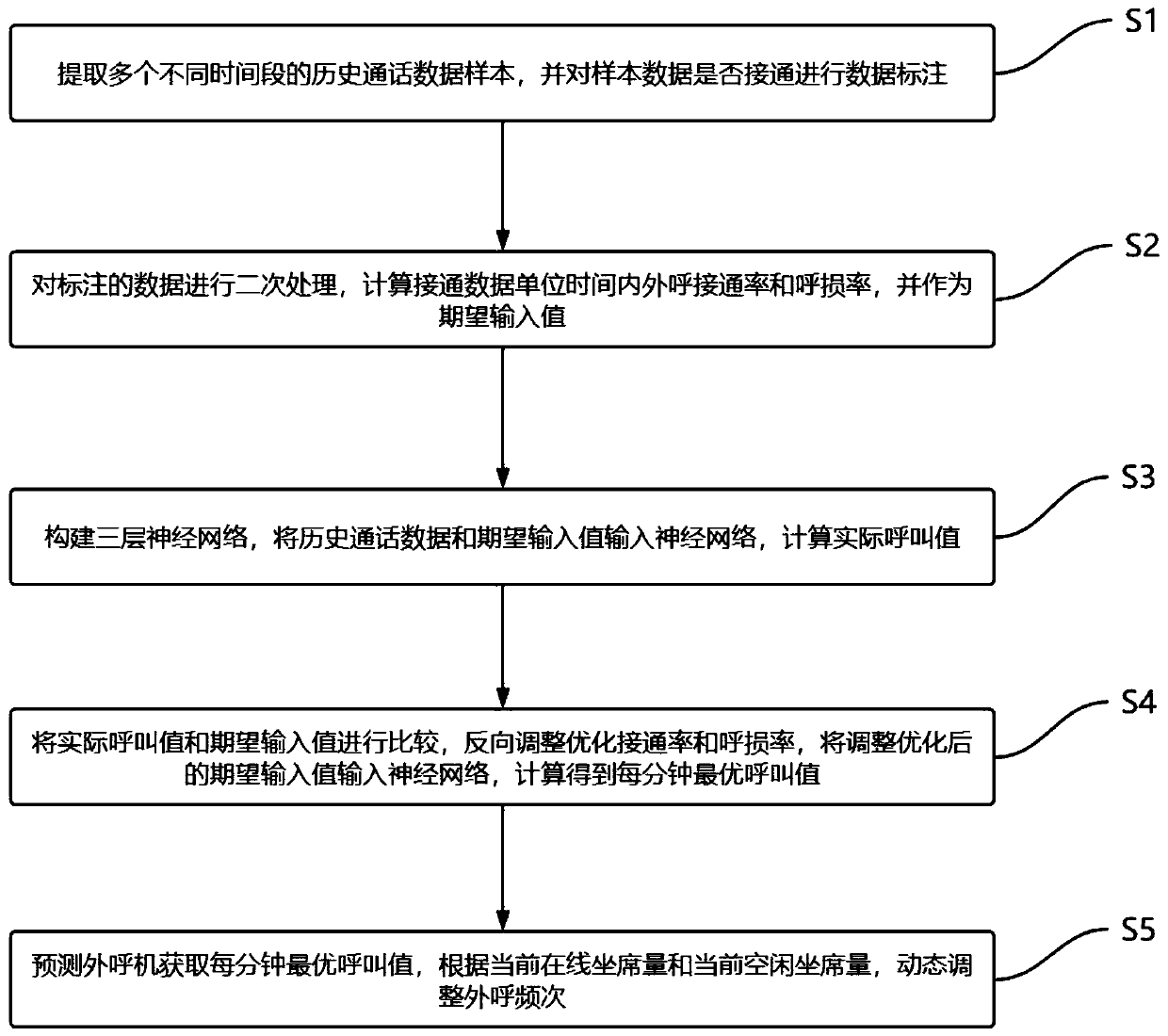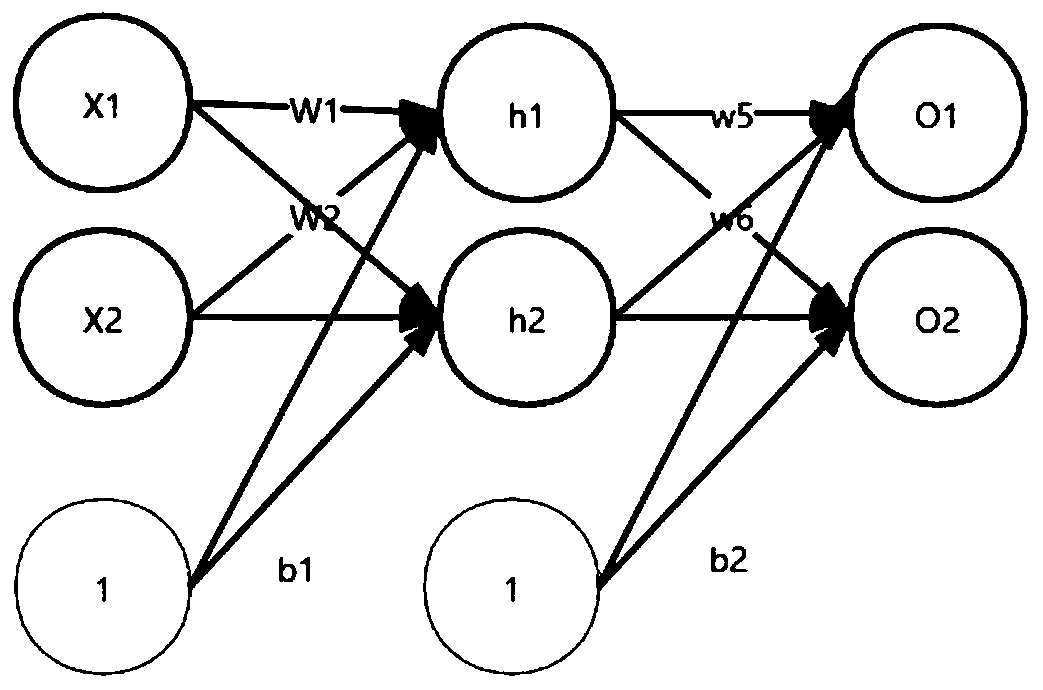Outbound algorithm for dynamically adjusting call frequency
A technology of dynamic adjustment and call frequency, applied in the direction of automatic exchange, neural learning method, telephone communication, etc., can solve problems such as low efficiency, inaccurate call volume, dynamic adjustment, etc., to improve efficiency and outbound call quality, and speed up convergence. process, the effect of reducing the call loss rate
- Summary
- Abstract
- Description
- Claims
- Application Information
AI Technical Summary
Problems solved by technology
Method used
Image
Examples
Embodiment Construction
[0031] Embodiments of the present invention will be described in further detail below in conjunction with the accompanying drawings.
[0032] Such as figure 1 Shown, the present invention is a kind of outbound algorithm of dynamic adjustment calling frequency, wherein: comprise the following steps:
[0033] Step S1: Extract multiple historical call data samples in different time periods, and mark whether the sample data is connected or not; among them, extract eight hours of historical call data samples, including the number of seats, dialing time, ringing time, queuing Time, call time, time from dialing to not being connected, mark connected and not connected data.
[0034] Step S2: Carry out secondary processing on the marked data, calculate the outbound call completion rate and call loss rate per unit time of connection data, and use them as expected input values;
[0035] Wherein, the connection rate is the ratio of the amount of calls made by the agent to the total amou...
PUM
 Login to View More
Login to View More Abstract
Description
Claims
Application Information
 Login to View More
Login to View More - R&D
- Intellectual Property
- Life Sciences
- Materials
- Tech Scout
- Unparalleled Data Quality
- Higher Quality Content
- 60% Fewer Hallucinations
Browse by: Latest US Patents, China's latest patents, Technical Efficacy Thesaurus, Application Domain, Technology Topic, Popular Technical Reports.
© 2025 PatSnap. All rights reserved.Legal|Privacy policy|Modern Slavery Act Transparency Statement|Sitemap|About US| Contact US: help@patsnap.com



